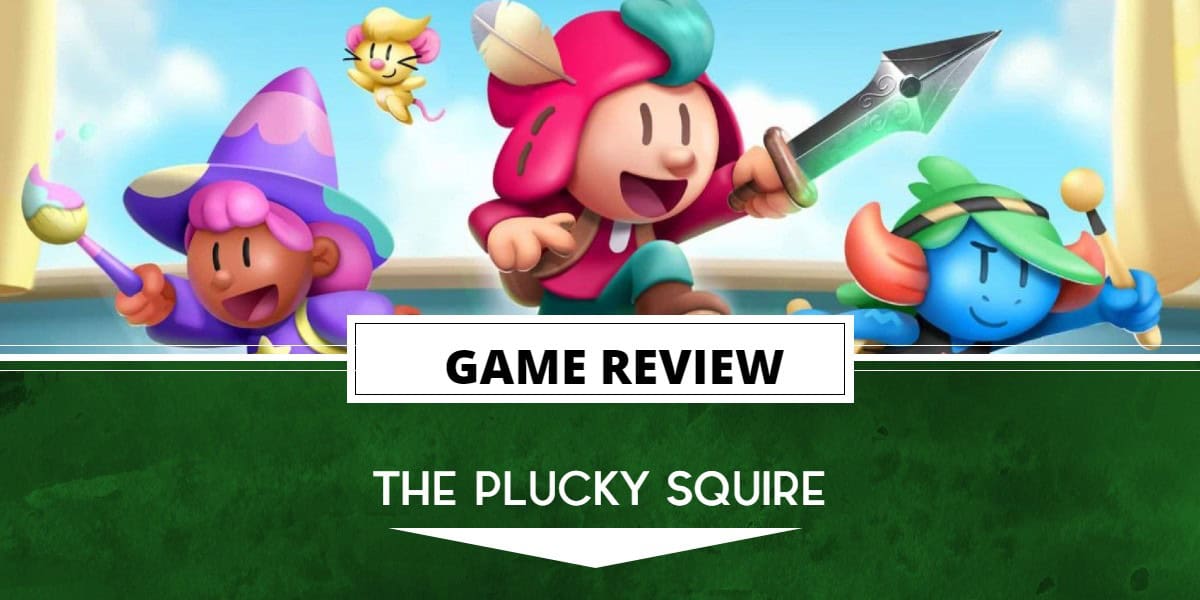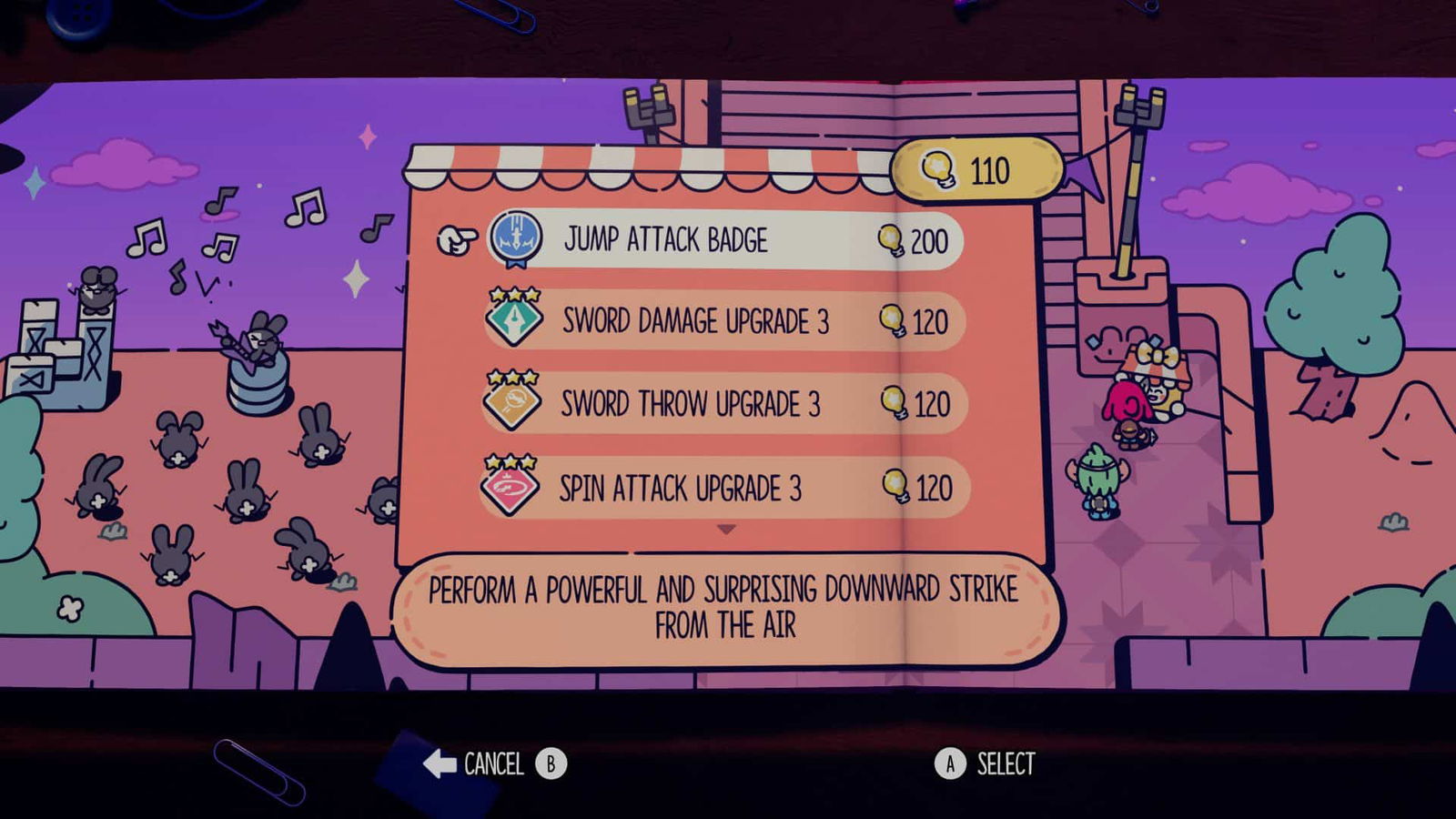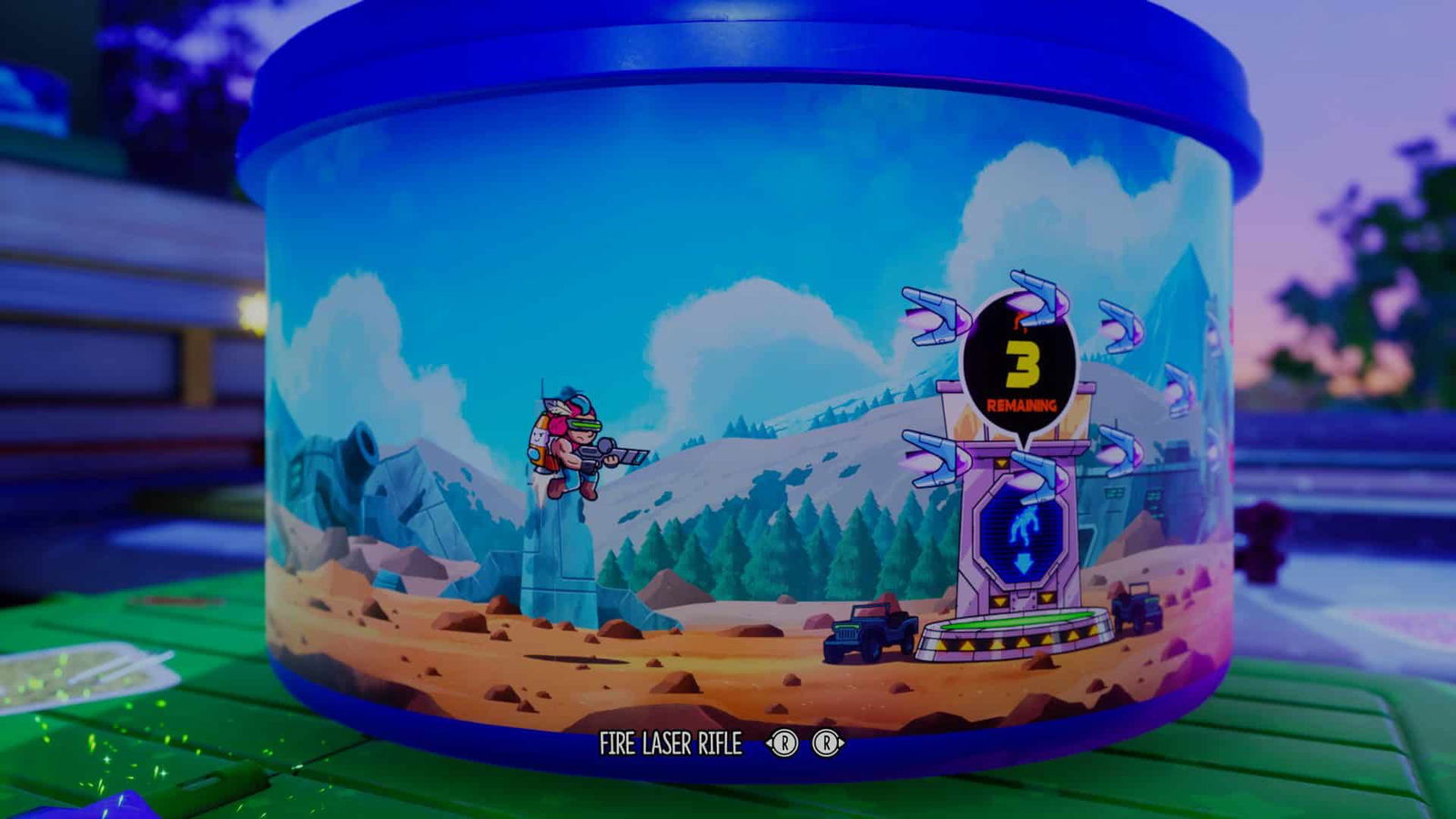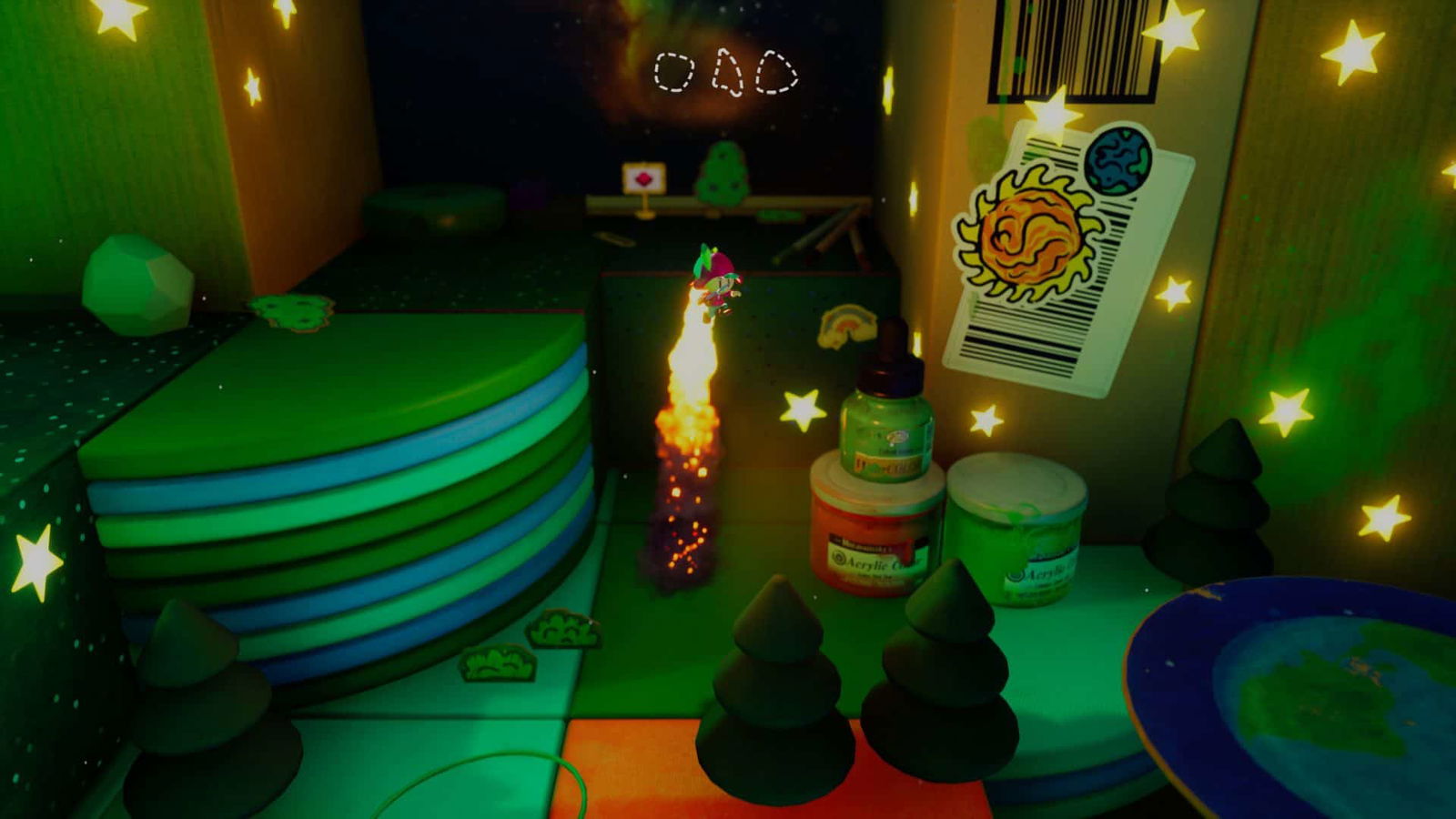The Plucky Squire is an action-adventure game from indie developer All Possible Futures and publisher Devolver Digital. A game that took me through a delightful fairytale story, across multiple dimensions…literally! If you’re looking for a super positive and fun game, look no further.
Game Name: The Plucky Squire
Platform(s): PlayStation 5, Xbox Series X|S, Nintendo Switch, PC (reviewed)
Publisher(s): Devolver Digital
Developer(s): All Possible Futures
Release Date: September 17, 2024
A Storybook Adventure
In The Plucky Squire, you play as Jot, a hero and writer, who protects the kingdom of Mojo where he lives from the evil wizard Humgrump. Near the beginning of your adventure, Humgrump gains the ability to kick Jot out of the storybook they are both part of. The story begins here, as you try to find a way back into the book and stop Humgrump’s dastardly plans.
What transpired was a story I deeply enjoyed, with a tone not too different from animated movies such as Toy Story. With a light-hearted, easy-to-understand tale but with some references for adults, The Plucky Squire tells a story that can be enjoyed by all ages. Not to mention, at roughly eight hours long, it is paced incredibly well.
What Game Am I Playing Now!?
Regarding gameplay, The Plucky Squire does some exciting things. Before we get to that, however, let’s talk about the basic mechanics. As you move around the world, you will engage in combat, where your main weapon is a sword. At the start, you will only have a basic slash on the X button while using an Xbox Controller. Eventually, you will collect enough light bulbs from defeated enemies or by hitting bushes and trees. These light bulbs can be used to purchase new combat moves and upgrade existing ones from a vendor that you’ll periodically encounter. The moves you can unlock include a spin attack unleashed by holding and releasing Left Trigger, and my personal favorite, the sword throw, which allows you to toss out and recall your sword with a press of Right Trigger. Yes, it did make me feel oddly like Thor! The other move you can get is a jump attack, which I never used, as I focused on upgrading the moves I already had to make them stronger instead. As I previously mentioned, these upgrades are simple to get, requiring you to purchase the next star level of the move from the vendor if you have enough light bulbs.
You will engage in combat in both the 2D and 3D dimensions. Much like everything else you do in the game, it is slightly smoother and thus more fun in 2D. However, the 3D gameplay isn’t terrible by any means. Now I must talk about the boss fights, which function very differently from the core combat gameplay. This is because they are essentially different games; one minute I’m fighting a honey badger in a Punch-Out style boxing match, and the next, I’m jumping into a card for a Pokémon-style turn-based battle. These are just two examples of several throughout the game’s ten chapters. Each boss fight felt unique due to this clever use of mini-games to add new temporary mechanics, often leaving me wondering what game I was playing in the best way possible.
Stepping away from combat now, you will mostly be solving puzzles, but this is where the experience sets itself apart from other similar games. Puzzles can be just in the 2D realm, involving changing words in sentences to affect the world around you. On several occasions, you will jump out of the book to find an item on the desk where Jot’s book is kept. Some items allow you to manipulate the book itself, like gloves to turn pages or tilt the book, or a stop stamp, which allows you to place a stamp on a page, stopping whatever item is under the stamp from moving.
What happens as a result is puzzles that take place in both dimensions at the same time. You may have to jump out of a green portal using the Y button to turn a page using a combination of the Triggers and Left Stick in the quest to find the right word to solve an environmental puzzle on the other page. Sometimes you’ll need to tilt the book from the 3D perspective to move an item into place for something you need within the 2D pages of the book. This multidimensional aspect of the puzzles and overall game design was very engaging throughout; I wish it had been used in even more unique ways.
There are two slight negatives to the gameplay, as I alluded to before. When in the 3D world, every action feels a bit too stiff. From traversal to combat, nothing feels as smooth as it does in 2D, and the camera doesn’t always help either, often hiding something you need or a collectible art scroll, which the pieces of concept art go into your gallery. The other negative is that any dialogue with side characters can be largely avoided since these characters often have one or two lines that do nothing to expand the story or world of the book itself. This is a massive shame because the main quest was enjoyable in a warm and fuzzy way with lots of funny and sometimes cheesy dialogue.
More Than A Visual Novel
Speaking of dialogue, most lines are not voiced but don’t need to be. The narrator, English actor Philip Bretherton, is outstanding. He adds emotions and interesting voices to the characters as he reads you the book, as you might for your children. I found it funny and immersive, so I started reading the dialogue that wasn’t narrated in the voices he laid out for these characters.
I’m pleased to say the narration isn’t the only impressive part of the presentation in The Plucky Squire. Visually, this game is beautiful, and the extra work required to have both 2D and 3D assets for many items and characters made it even more shocking how good everything looks. When it comes to audio, I was also very pleased, from the sound of throwing and retrieving Jot’s sword to the music. I loved almost every sound in this game. The only audio aspect I didn’t enjoy was hearing Jot make the same strained jumping sound whenever I would jump in or out of the book.
Overall, the presentation in The Plucky Squire is incredible in whichever dimension you see and hear it.
Accessibility Options
As for accessibility in The Plucky Squire, it is more simplistic than I would like, but the team hit on a few very important options, which is all you can ask from an indie developer with a much more limited budget.
While the game offers several accessibility options, such as disabling falling platforms and invincibility for players who want to focus solely on the story, I encountered an issue during my testing. Specifically, the invincibility option does not seem to activate during boss fight mini-games. However, there is an option to skip these mini-games via the pause menu if players find them challenging.
To enhance the experience for those who want to engage with these mini-games, even if they need to use invincibility, it would be beneficial if the invincibility option were active during these segments as well. This adjustment would ensure that all players can enjoy the content without frustration and still have the option to skip if desired.
Performs Like A Dream
The Plucky Squire is far from a demanding game on the technical side and therefore runs virtually flawlessly on my PC at max settings. I had to enable V-Sync since the framerate was running much higher than what my LG C3 display is capable of. Keep in mind that your experience may vary depending on your setup. In terms of bugs, there were none apart from the enemies you fight in the game. Technical variety was nowhere to be seen during my playthrough.
The game plays better than it did when we previewed The Plucky Squire a few months ago. Not just on high-end PCs either. While my PC is a bit of a beast, we’ve tested it on mid-range PCs, and the game performed without a hitch. No worrying about being restricted to 30FPS or 60FPS here.
My PC Specs: Intel Core i9-14900KF, 32GB Corsair VENGEANCE RGB DDR5 6000MHz, 16GB GEFORCE RTX 4080 SUPER
Psst… Keith sounding in. I know this is Jordan’s review and all, but I wanted to drop in and say a few things about playing The Plucky Squire as a mobile experience… mainly the Steam Deck and ROG Ally/Ally X. Rest assured, the game plays well on those devices just as well as a super dee duper PC. So, if that’s all you have and was wondering if you could enjoy the game on those devices, you sure can (Sureyoucan!).
Enjoy! Ok, back to Jordan!
The Final Chapter
As we near the end of this review, I can wholeheartedly say I loved most of my time with The Plucky Squire. The use of different dimensions to solve puzzles stood out, just like the number of different mechanics across the boss fights. The Plucky Squire is fun and almost the perfect fairytale game for all ages. Unfortunately, it is slightly let down by a distinct difference in quality between the 2D and 3D gameplay, along with largely pointless dialogue interactions that don’t need to be there. Not to mention, there is accessibility which has some important options but doesn’t seem to implement them to their full potential.
Review Disclosure Statement: A copy of The Plucky Squire was provided to us by Devolver Digital for review purposes. For more information on how we review video games and other media/technology, please review our Review Guideline/Scoring Policy for more info.
Affiliate Link Disclosure: One or more of the links above contain affiliate links, which means at no additional cost to you, we may receive a commission should you click through and purchase the item.
The Plucky Squire Review - A MultiDimensional Delight
Summary
The Plucky Squire is a wonderful experience from start to finish. I just wish that the 3D sections were on par with those in 2D. Regardless, this is a title that everyone needs to play, because they won’t be disappointed.
Pros
- Fantastic Looking Art Design
- Logic Based Puzzles
- The Ability To Manipulate Things Is Well Used.
- Mini-games as part of Boss Fights
Cons
- Movement In 3D Can Feel Stiff
- Not Enough Meaningful Side Conversations/Dialogue
-
The Plucky Squire Review - A MultiDimensional Delight







